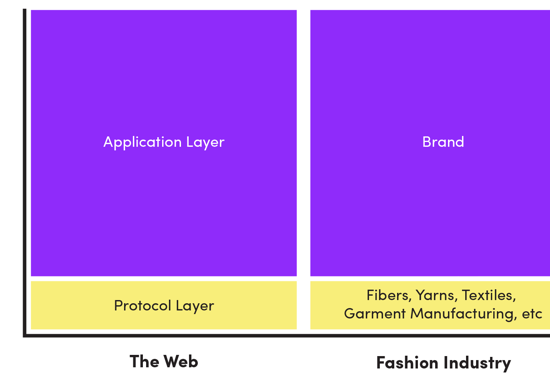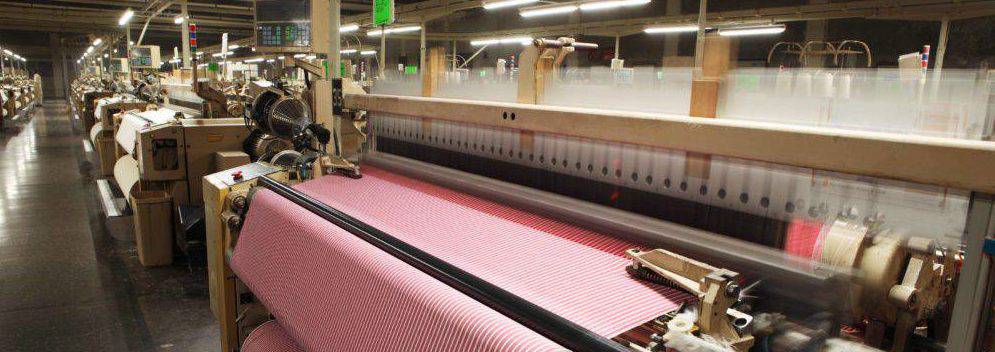Blockchain in fashion: what is the future of e-commerce?
Blockchain has been defined as an incorruptible digital ‘ledger’ of economic transactions that can be easily programmed to record not just financial actions but almost anything of virtual value. The invention has created the base for a new type of internet, allowing you to distribute digital information fearlessly and securing all transactions.
What makes Blockchain more secure? The answer is its decentralized database which means that the data is not just saved in one location. The records are open for public and easily verifiable for every user that has access to the system. This decentralized version creates a certain mechanism to prevent hackers from corrupting a database. This mechanism is truly what industries such as healthcare, supply chain management, and other financial services need.
The web & the current fashion industry
The way the World Wide Web is configured is similar to the way the fashion industry is. The Web lies on a thin protocol layer, with most of the value in the system being captured by the applications. For example, an application website like Google is built on top of underlying protocols that make it work.

Likewise, in fashion, only major players tend to dominate the market. As a result of their size and power, they have the perfect ability to constrain resources. This takes away the attention from more niche platforms, monopolizing the user data and dwarfing creativity.
The fashion industry is not entirely centralized, and in fact, it comprises of many independent merchants. However, since the industry is optimized for mass production, the current model’s power is centralized. Large fashion brands can place massive-scaled orders, invest in new technology and reach minimums that small brands cannot. That is changing as more and more suppliers are now stocking materials and accepting small orders. Many subscription software is allowing small brands to take a risk with newer platforms.
How it works
Since Blockchain is a digital record of consumer data and transactions, all real-time updates can be seen across the network, making it possible to see the entire history of a fashion product and its major components. The blocks of data can’t be edited which makes the technology more difficult to hack and therefore secure an alternative to the current digital data.
Blockchain can record all kinds of data including art and contracts while minimizing paperwork and lowering costs. Mentioned ahead are other benefits of Blockchain for e-fashion.
- Authenticity
For fashion house, the authenticity of luxury brands has been a recurring issue, diminishing the exclusivity of the items and convincing knockoffs at lower prices. Data tracked from the sourced materials will ensure customers that their purchase is genuine and one hundred percent authentic. Blockchain also promises to curb theft of many expensive items and promotes resale of goods by tracking the ownership of the items.
For instance, the fashion brand Babyghost is already taking these steps by collaborating with the Chinese Blockchain company BitSE to deliver a vast range of clothing incorporating the NFC tags which will be verified at every point using Blockchain technology.
- Online retail and payment
Blockchain has been widely known for its use in tracking all transactions and ownership of crypto-currencies like Bitcoin, successfully creating a secure and trusted system. The Blockchain system not only assists retailers to move into accepting crypto-currency payments, but the digital records created also help refund the process and streamline the returns. Large purchases like houses and cars also have their ownership tracked and verified to reduce the resale of stolen goods.
- Exchange of goods
Blockchain easily allows for efficient and quicker identity verifications processes, without third-party intervention. Each user can easily monitor their personal information. Have you ever performed the ownership process for luxury goods? Through this grip of technology, many consumers, owners can see the change in the ownership of the goods.
Meanwhile, Everledger is the existing luxury good industry and technology involved with the diamond ownership exchanged. It’s a London-based company that has placed more than 1.6 million diamonds on a Blockchain. The record listings on the system include a certificate of the diamonds, color, and carat.
Fast fashion and blockchain
Since the Second World War, fashion has officially been divided into specific seasons such as spring/summer, and autumn/winter lines debut in February. The uneven timeline is carefully designed to give all brands like Leather Skin Shop enough time to gauge the interest of retail buyers and customers. In the period between when the newest fashion lines are introduced, and the moment they arrive on store shelves, brands assess the demand so they can manufacture the right amount of garments for the season.
Fast fashion has shifted designs from the catwalk to store shelves, upending every aspect of that model in particular.

The big brands like Top Shop, H&M, Forever 21 and Zara have built their businesses on agility and speed. As soon as these retailers spot a different trend, they can deploy their hyper-rapid design and supply chain systems to carry the trend to market as quickly as possible. This method allows fast fashion brands to beat traditional labels to the market. Accessories and garments strutted down at runways may get spotted in a few months and replicated by fast fashion brands before the original material hits the stores.
Fast fashion brands tend to push a variety of clothing styles to cater to the preference of smaller, targeted consumers – with a real-time ability to get products fast on the store shelves. Moreover, they tend to push run to test the waters for customer demand or self-collection for hyper-short lifespans.
In a nutshell
Surely, technology is changing the game for every participant in the market and fashion industry- retailers, stylists, manufacturers, designers and of course, customers.
Cutting-edge technologies like Blockchain and virtual reality have a high range of applications in the age-old fashion world, allowing product production and distribution methods to grow just as quickly as fashion taste and trends.
Automation could alter many roles within the fashion unit. However, it will also likely result in new types of roles around customer service, engineering, and curation. As technology becomes more and more responsive to individual psyche, it will be interesting to watch the roles switch from tastemaker to taste interpreter.
